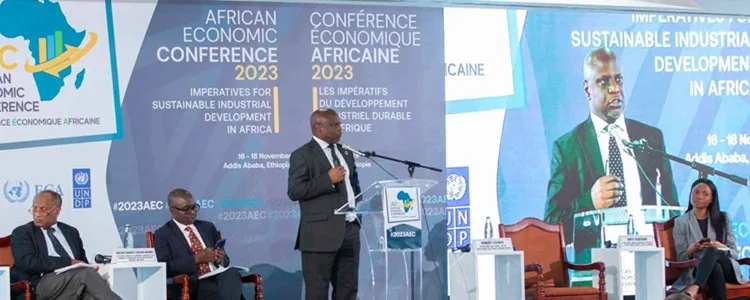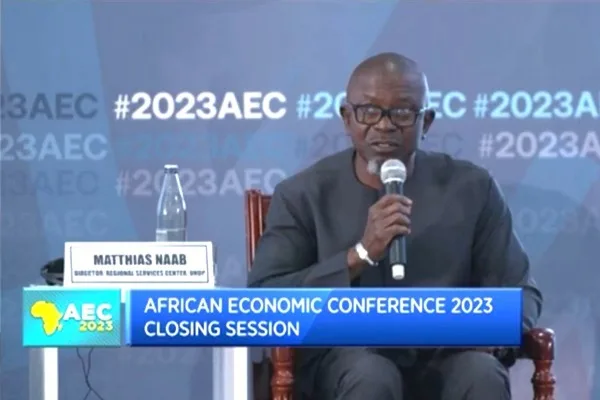PPP Can Close Infrastructure Gap in Africa
At the 18th annual African Economic Conference in November 2023 (#AEC2023), experts explored the application of Public-Private Partnerships (#PPP) to address the huge infrastructure gap that Africa faces in order to support its socio-economic development. As the saying goes, “highways are literally the roads to riches!”
During his keynote address to the plenary session of AEC2023, Dr Robert Lisinge, Acting Director of the Private Sector Development and Finance Division of the United Nations Economic Commission for Africa (UNECA) evangelized the adoption of Public-Private Partnerships (#PPP) in order to bridge the financing gap for infrastructure development in Africa.
According to AfDB, Africa has a financing need of about USD 150 billion for infrastructure development every year. However, only a third of that amount is mobilized via MDB and international partners, currently.
“The infrastructure financing gap in Africa is around $100 billion annually. To bridge the infrastructure gap there is a need to bring in the private sector.”
PPP Legal Expert Eniye Ogbegor
Traditionally, China has been one of the major financiers of infrastructure projects via concessional loans. But as the Chinese economy has slowed and is being brought down by the ‘trade war’ with USA, money is now harder to come by. Africa must seek alternative sources and the Finance, Design, Build, Operate and Transfer (FDBOT) might become the new normal, especially since PPP is a better formula to avoid ‘white elephants’ thanks to the greater due diligence.
However, Dr Lisinge pointed out that African countries have a diverse experience with PPP due to their market size, GDP and legal sophistication, but the uptake momentum to PPP is not as fast as one would like.
Delving deeper in the legal aspects of PPP, Ms Eniye Ogbebor, a legal expert at the World Association of PPP Units and Professionals (WAPPP), underlined that PPP appears to be the instrument of choice to find the right balance between economic development and socio-environmental imperatives because of the inherent close coordination between the private and public sectors.
Power Plants, Transportation, Water & Sanitation are some of the sectors that lend themselves well to PPP. Indeed, PPPs provide a framework for public and private sectors to share financing, mitigate risks and reduce uncertainties. In the case of PPP, it is ‘somewhat easier’ to initiate a dialogue with civil society while paying attention to the carbon footprint.

Speaking about the case of Cameroon, Dr Arsene Nkama, a professor at the Faculty of Economics at the University of Yaounde II, highlighted that the Cameroonian economy has been resilient thanks in part to PPP. Nevertheless, he believes that more capacity building and advocacy are necessary for other economies to leverage PPP and to fully extract the benefits.
In the same vein, Mr Getahun Moges, an Energy Sector Expert who retired from the Energy Regulator in Ethiopia, underlined that there seems to be still ‘a big challenge to grasp the regulatory frameworks governing PPP.’ Ethiopia has been able to apply PPP to several highways and green energy projects.
In a study by AfDB for the decade from 2008 to 2018 (just before COVID), only five African countries accounted for half of all PPP projects on the continent; the countries are South Africa, Morocco, Nigeria, Egypt and Ghana. Successful PPP projects include the Dakar Toll Highway, Turkana Wind Farm, Noor Ourzazate PV Plant, Dry Port in ‘6th of October City’ in Egypt, and Kigali Water Project.
Therefore, it is clear that there is still much work to be done in terms of promoting #PPP across the continent. To that effect, the AfDB has introduced the PPP Operational Framework, and the World Bank has established the PPP Legal Resource Center (PPPLRC) to jumpstart countries wishing to take the PPP plunge.
In order to tap into private capital, Africa has to build up #PPP competencies, share knowledge and reinforce partnerships between the public and private sectors in order to close the infrastructure gap.

